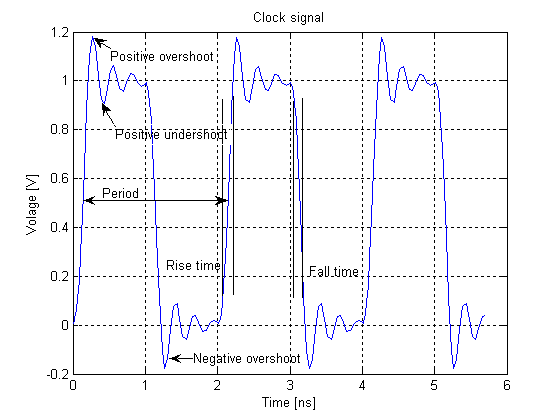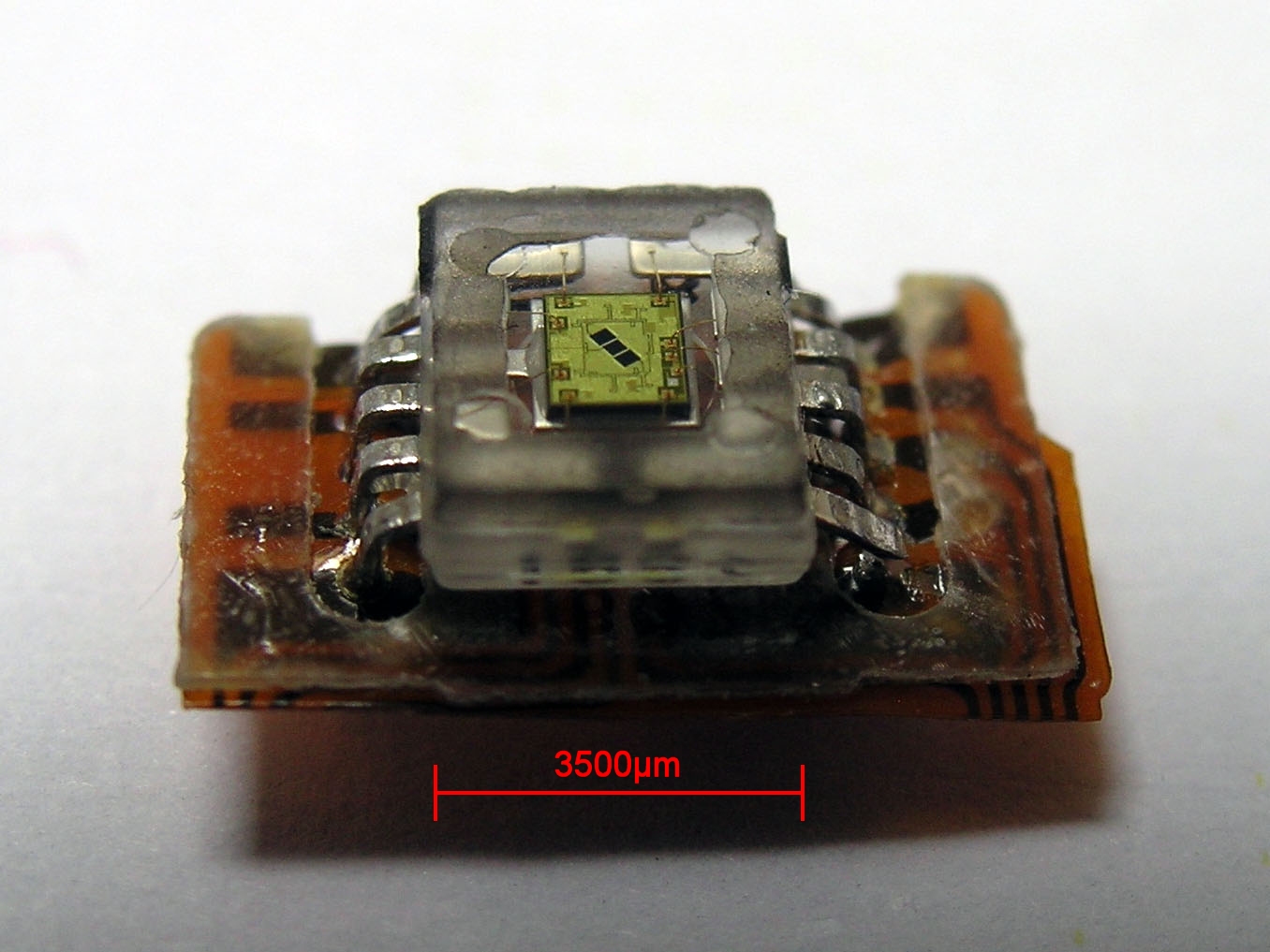|
Chip-scale Atomic Clock
A chip scale atomic clock (CSAC) is a compact, low-power atomic clock fabricated using techniques of microelectromechanical systems (MEMS) and incorporating a low-power semiconductor laser as the light source. The first CSAC physics package was demonstrated at the National Institute of Standards and Technology (NIST) in 2003, based on an invention made in 2001. The work was funded by the US Department of Defense's Defense Advanced Research Projects Agency (DARPA) with the goal of developing a microchip-sized atomic clock for use in portable equipment. In military equipment it is expected to provide improved location and battlespace situational awareness for dismounted soldiers when the global positioning system is not available, but many civilian applications are also envisioned. Commercial manufacturing of these atomic clocks began in 2011. The CSAC, the world's smallest atomic clock, is 4 x 3.5 x 1 cm (1.5 x 1.4 x 0.4 inches) in size, weighs 35 grams, consumes only 1 ... [...More Info...] [...Related Items...] OR: [Wikipedia] [Google] [Baidu] [Amazon] |
Clock Signal
In electronics and especially synchronous digital circuits, a clock signal (historically also known as ''logic beat'') is an electronic logic signal (voltage or current) which oscillates between a high and a low state at a constant frequency and is used like a metronome to synchronize actions of digital circuits. In a synchronous logic circuit, the most common type of digital circuit, the clock signal is applied to all storage devices, flip-flops and latches, and causes them all to change state simultaneously, preventing race conditions. A clock signal is produced by an electronic oscillator called a clock generator. The most common clock signal is in the form of a square wave with a 50% duty cycle. Circuits using the clock signal for synchronization may become active at either the rising edge, falling edge, or, in the case of double data rate, both in the rising and in the falling edges of the clock cycle. Digital circuits Most integrated circuits (ICs) of suffi ... [...More Info...] [...Related Items...] OR: [Wikipedia] [Google] [Baidu] [Amazon] |
Microsemi
Microsemi Corporation was an Aliso Viejo, California-based provider of semiconductor and system solutions for aerospace & defense, communications, data center and industrial markets. In February 2018, it was announced that Chandler, Arizona-based Microchip Technology was acquiring the company for over US$10 billion, pending regulatory approval. In May 2018, it was announced that Microchip had completed its acquisition of Microsemi. In August 2018, Microchip discovered that Microsemi shipped large orders to distributors on discount before the closing of the acquisition and had a culture of excessive extravagance, casting some doubt on the future prospect of the acquisition. History 1959 to 1970: Early years Microsemi was founded in February 1959 in Culver City, California as MicroSemiconductor. It incorporated in Delaware on September 27, 1960. A trade catalog and price lists from this early period can be found at the Smithsonian Institution. In March 1963, A. Feldon repre ... [...More Info...] [...Related Items...] OR: [Wikipedia] [Google] [Baidu] [Amazon] |
Compound Annual Growth Rate
Compound annual growth rate (CAGR) is a business, economics and investing term representing the mean annualized growth rate for compounding values over a given time period. CAGR smoothes the effect of volatility of periodic values that can render arithmetic means less meaningful. It is particularly useful to compare growth rates of various data values, such as revenue growth of companies, or of economic values, over time. Equation For annual values, CAGR is defined as: :\mathrm(t_0,t_n) = \left( \frac \right)^\frac - 1 where V(t_0) is the initial value, V(t_n) is the end value, and t_n - t_0 is the number of years. CAGR can also be used to calculate mean annualized growth rates on quarterly or monthly values. The numerator of the exponent would be the value of 4 in the case of quarterly, and 12 in the case of monthly, with the denominator being the number of corresponding periods involved. In practice, CAGR calculations are often performed in Microsoft Excel. A convenient ... [...More Info...] [...Related Items...] OR: [Wikipedia] [Google] [Baidu] [Amazon] |
Coherent Population Trapping
In atomic physics, a dark state refers to a state of an atom or molecule that cannot absorb (or emit) photons. All atoms and molecules are described by quantum states; different states can have different energies and a system can make a transition from one energy level to another by emitting or absorbing one or more photons. However, not all transitions between arbitrary states are allowed. A state that cannot absorb an incident photon is called a dark state. This can occur in experiments using laser light to induce transitions between energy levels, when atoms can spontaneously decay into a state that is not coupled to any other level by the laser light, preventing the atom from absorbing or emitting light from that state. A dark state can also be the result of quantum interference in a three-level system, when an atom is in a coherent superposition of two states, both of which are coupled by lasers at the right frequency to a third state. With the system in a particular superp ... [...More Info...] [...Related Items...] OR: [Wikipedia] [Google] [Baidu] [Amazon] |
Wavelength
In physics and mathematics, wavelength or spatial period of a wave or periodic function is the distance over which the wave's shape repeats. In other words, it is the distance between consecutive corresponding points of the same ''phase (waves), phase'' on the wave, such as two adjacent crests, troughs, or zero crossings. Wavelength is a characteristic of both traveling waves and standing waves, as well as other spatial wave patterns. The multiplicative inverse, inverse of the wavelength is called the ''spatial frequency''. Wavelength is commonly designated by the Greek letter lambda (''λ''). For a modulated wave, ''wavelength'' may refer to the carrier wavelength of the signal. The term ''wavelength'' may also apply to the repeating envelope (mathematics), envelope of modulated waves or waves formed by Interference (wave propagation), interference of several sinusoids. Assuming a sinusoidal wave moving at a fixed phase velocity, wave speed, wavelength is inversely proportion ... [...More Info...] [...Related Items...] OR: [Wikipedia] [Google] [Baidu] [Amazon] |
Microwave Cavity
A microwave cavity or radio frequency cavity (RF cavity) is a special type of resonator, consisting of a closed (or largely closed) metal structure that confines electromagnetic fields in the microwave or radio frequency, RF region of the spectrum. The structure is either hollow or filled with dielectric material. The microwaves bounce back and forth between the walls of the cavity. At the cavity's resonant frequency, resonant frequencies they reinforce to form standing waves in the cavity. Therefore, the cavity functions similarly to an organ pipe or sound box in a musical instrument, oscillating preferentially at a series of frequencies, its resonant frequencies. Thus it can act as a bandpass filter, allowing microwaves of a particular frequency to pass while blocking microwaves at nearby frequencies. A microwave cavity acts similarly to a resonant circuit with extremely low loss at its frequency of operation, resulting in quality factors (Q factors) up to the order of 106, ... [...More Info...] [...Related Items...] OR: [Wikipedia] [Google] [Baidu] [Amazon] |
Vertical Cavity Surface Emitting Laser
The vertical-cavity surface-emitting laser (VCSEL ) is a type of semiconductor laser diode with laser beam emission perpendicular from the top surface, contrary to conventional edge-emitting semiconductor lasers (also called ''in-plane'' lasers) which emit from surfaces formed by cleaving the individual chip out of a wafer (electronics), wafer. VCSELs are used in various laser products, including computer mice, fiber-optic communications, laser printers, Face ID, and smartglasses. Production advantages There are several advantages to producing VCSELs, in contrast to the production process of edge-emitting lasers. Edge-emitters cannot be tested until the end of the production process. If the edge-emitter does not function properly, whether due to bad contacts or poor material growth quality, the production time and the processing materials have been wasted. VCSELs however, can be tested at several stages throughout the process to check for material quality and processing i ... [...More Info...] [...Related Items...] OR: [Wikipedia] [Google] [Baidu] [Amazon] |
Gas Discharge Lamp
Gas-discharge lamps are a family of artificial light sources that generate light by sending an electric discharge through an ionized gas, a plasma. Typically, such lamps use a noble gas (argon, neon, krypton, and xenon) or a mixture of these gases. Some include additional substances, such as mercury, sodium, and metal halides, which are vaporized during start-up to become part of the gas mixture. Single-ended self-starting lamps are insulated with a mica disc and contained in a borosilicate glass gas discharge tube (arc tube) and a metal cap. They include the sodium-vapor lamp that is the gas-discharge lamp in street lighting. In operation, some of the electrons are forced to leave the atoms of the gas near the anode by the electric field applied between the two electrodes, leaving these atoms positively ionized. The free electrons thus released flow to the anode, while the cations thus formed are accelerated by the electric field and flow towards the cathode. The ions ty ... [...More Info...] [...Related Items...] OR: [Wikipedia] [Google] [Baidu] [Amazon] |
Photodetector
Photodetectors, also called photosensors, are devices that detect light or other forms of electromagnetic radiation and convert it into an electrical signal. They are essential in a wide range of applications, from digital imaging and optical communication to scientific research and industrial automation. Photodetectors can be classified by their mechanism of detection, such as the photoelectric effect, photochemical reactions, or thermal effects, or by performance metrics like spectral response. Common types include photodiodes, phototransistors, and photomultiplier tubes, each suited to specific uses. Solar cells, which convert light into electricity, are also a type of photodetector. This article explores the principles behind photodetectors, their various types, applications, and recent advancements in the field. History The development of photodetectors began with the discovery of the photoelectric effect by Heinrich Hertz in 1887, later explained by Albert Einst ... [...More Info...] [...Related Items...] OR: [Wikipedia] [Google] [Baidu] [Amazon] |




